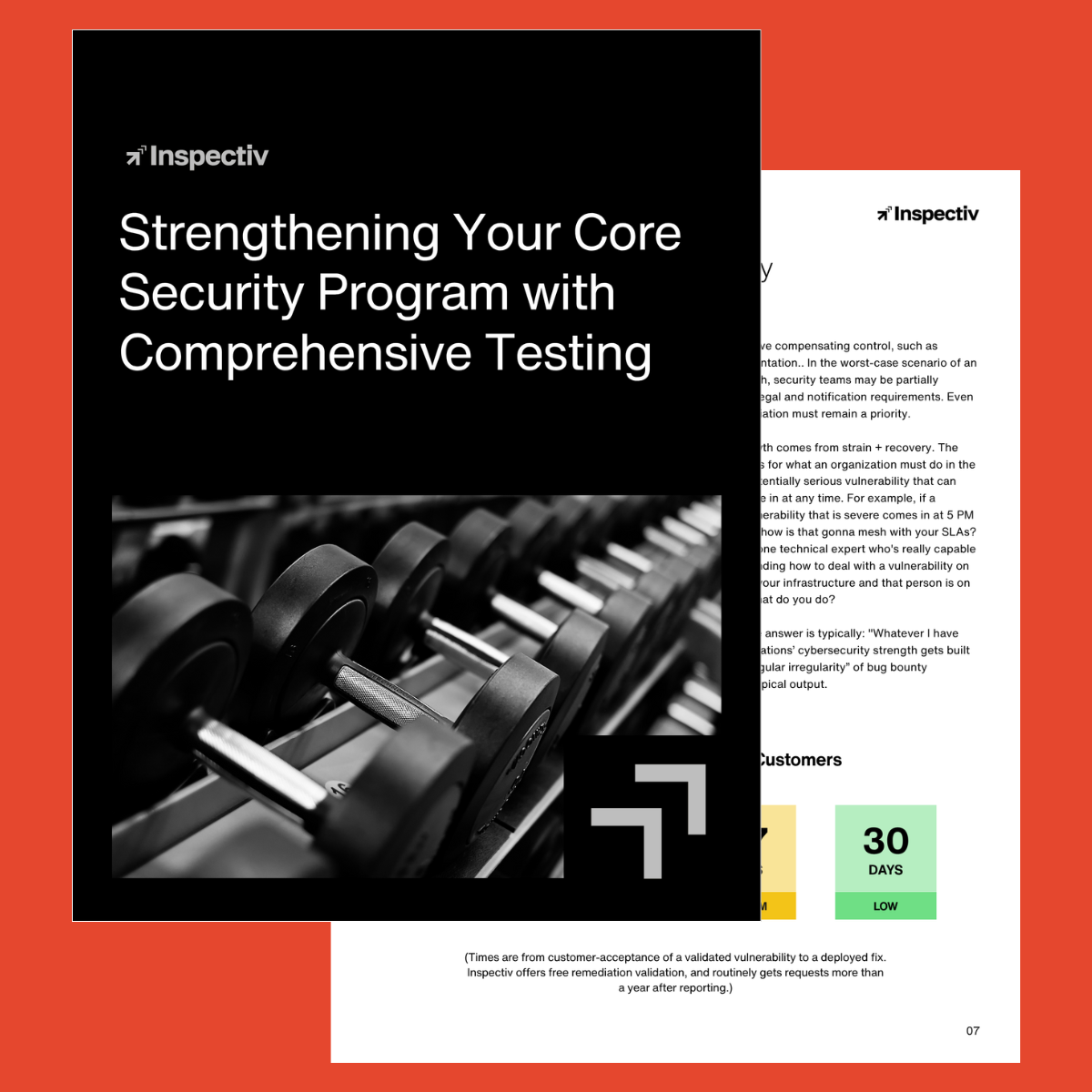EDUCATIONAL ASSETS
Resource Center
Browse our inventory of educational resources for industry insights, best practices, case studies, webinars, white papers, company news, and more.
Featured Resource

White Paper
Nov 06, 2025
Strengthening Your Core Security Program with Comprehensive Testing
Learn how to move beyond vulnerability discovery and build an adaptive, resilient security program. This white paper explores how continuous testing and risk-based prioritization turn security operations into a sustainable strength strategy.
All Resources
Popular topics
Subscribe
Get our latest tips, tools and insights delivered to your inbox
Trusted by Leading Security Teams
""We run multiple bug bounty programs with Inspectiv across different parts of our business. The quality of the findings has made a real difference in how we manage risk. Inspectiv’s team consistently uncovers impactful vulnerabilities and provides clear, detailed insights that help us respond quickly and strengthen our security posture."
Paul Intrarakha
Sr. Principal Application Security Engineer
ServiceTitan
See the Difference for Yourself
Ready to level up your AppSec program? Book a personalized demo to see how Inspectiv helps you uncover real risks, streamline workflows, and scale your security program through one unified platform designed to operate the way your team does.
